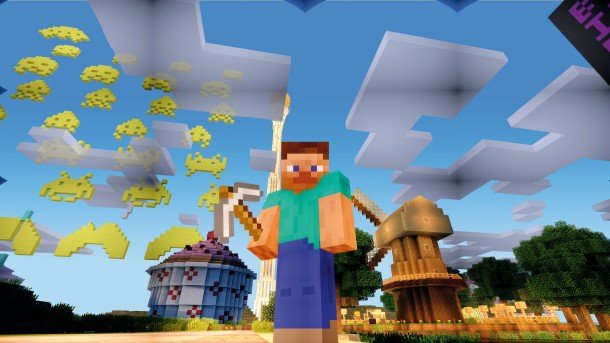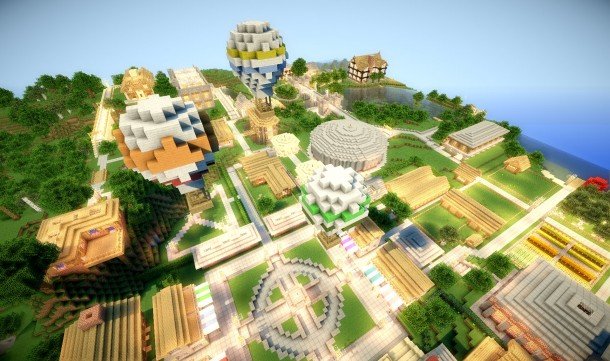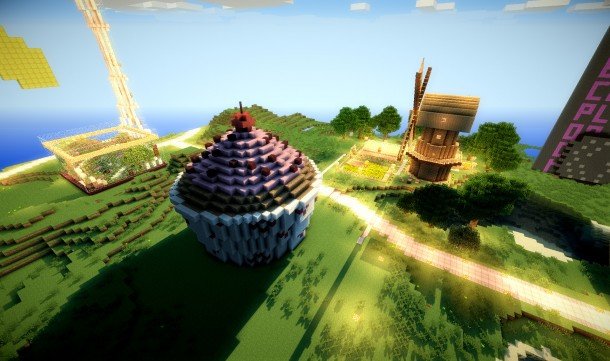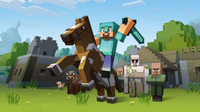Blockbuster - The Making of Minecraft

This article originally appeared in issue 246 of PC Gamer UK. Also check out our article on The Future of Minecraft
"I think I was already fucking rich by the time I realised, 'I'm gonna be fucking rich.'" That's how quickly it all happened for Markus 'Notch' Persson.
He'd made a game called Minecraft – you may have heard of it. It did rather well. Is doing, actually: three and a half years after the alpha version went on sale, Notch's studio, Mojang, is still selling 43,420 copies every day, and that number continues to climb.
You'd be forgiven for thinking Notch was one lucky nerd. But unlike the stories of instant, frictionless wealth that are so popular in these recessionary times, luck plays the smaller part in the story of Minecraft's meteoric rise. He's more than a geek who stumbled into the zeitgeist and came away with a multi-million selling game. And Minecraft is now more than Notch. In fact, it's now more than a game.
It's at least two. One is a procedurally generated sandbox that can be sculpted at the players' whim, enabling the cooperative construction of everything from architectural wonders to computing devices. The other takes that malleable world as its setting and imposes an RPG on top, forcing the player to scavenge for resources, craft tools to modify the landscape and fend off nefarious creatures.
Yet Minecraft is more even than this. Much of what it is exists outside the game Mojang have made: it's a generously adapted platform for player creativity, spawning countless videos, maps, mods, spin-offs and clones. It's a global community that meets online, in classrooms, activity centres, convention halls and, in the case of MineCon 2012, a themepark. It's even an educational tool and an unusual conduit for urban regeneration projects.

Notch has not achieved all this by himself, as the power of his celebrity sometimes seems to suggest (Urban Dictionary defines 'Notch' as another word for Jesus). But if his status as the king of indie, amplified by his vocal and occasionally pugilistic presence on Twitter, has somewhat eclipsed the efforts of those around him, neither was Notch simply in the right place at the right time. He was also exactly the right guy: a talented, self-motivated programmer whose avid taste for games crisscrossed a Venn diagram of instant gratification, hardcore toil and DIY construction. At the centre of which, Minecraft squarely rests.
The biggest gaming news, reviews and hardware deals
Keep up to date with the most important stories and the best deals, as picked by the PC Gamer team.
In fact, to hear of his early encounters with games makes Minecraft sound a little like destiny. His childhood furnished him with a Commodore 128, a glut of pirated games, and an ever-curious, dilettante father.
“My dad was one of those really nerdy people,” says Notch as we squeak back into the plush leather seats of Mojang's boardroom – which, like the rest of the Stockholm-based studio, is decked with ironic ostentation: part gentleman's club, part supergeek playpen.
“He's the kind of person that just has new hobbies all the time. Like: 'Oh, I'm going to start building my own fishing rods.' He did that for a couple of years. And: 'I'm going to learn computers,' – and he builds his own modem.”
Perhaps, in some other universe, Notch is a fly-fishing champion. In this one, however, his diet of gaming segued quickly into a desire to create.

- Minecraft skins: The best new looks
- Minecraft mods: Go beyond vanilla
“I enjoyed Shoot 'Em Up Construction Kit,” he recalls. “I couldn't really make anything in it, but I used to like the sprite editor, doing animations that I didn't even put in the game. I just animated weird stuff and played it back.”
Code samples in a Swedish computing magazine made Notch aware of more expansive possibilities. He and his sister copied this cryptic language into the Commodore to create rudimentary games.
“I figured out that if I made typos, it did something else,” he says. “That's kind of how I learned programming. My big dream was always being able to make Doom. I was so impressed at the leap from Wolfenstein to Doom, both in game design and technology. I was just totally blown away – well, everyone was. Are we allowed to do this? Can games be this interesting? I guess I had real, actual dreams about making something like Doom.”
Though Notch's entries to code-jams often dabble with 2.5D engines of Doom's ilk, the releases he's most commonly associated with could not be considered action games. Instead, they're complex, sprawling systems, in which players are encouraged to invest hours upon hours of digital graft. In the case of Wurm Online, a game he co-developed with Rolf Jansson, the result was a world of dizzying richness, entirely created by a self-organising society of players.
It's a gruelling experience, however. Everything in Wurm must be created from scratch, and the raw materials harvested. Doing so takes such a long time that a division of labour among cooperating players is the only way to achieve anything – but the game offers no helpful, predetermined structure for this, no foremen or leaders.


